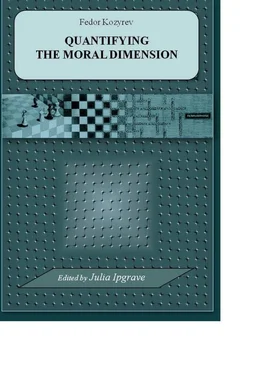According to Piaget, changes in mental abilities accompanying maturation are a key for all aspects of personal development. Processes of moral (and spiritual) development are paralleled in this approach with processes taking place in the cognitive domain. To become more moral means first of all to acquire more elaborated cognitive tools and to operate logical schemas of growing complexity that ensure more comprehensive awareness of the existence of another ego. While the substantial aspect of moral development is described as assimilation or interiorisation of external matter, its formal aspect appears as accommodation, that is, the transformation of cognitive structures ( schemas in Piaget’s terms) under the influence of external matters for their better assimilation. Accommodation is generally directed toward decentration of ego, that is, toward successive unlocking of egocentric schemas.
Thus Piaget and later his disciple Lawrence Kohlberg reduce the development of moral consciousness to the progress in a subject’s ability for moral judgment. Certainly, it is a serious simplification, but it opens a door for using quantitative methods in diagnostics. Theoretically established a developmental vector constitutes a reference axis for the coordinated measurement and comparability of its results. However conventional it is, this coordination is better than nothing. In the situation of diverse axiological systems and pedagogical ideals it provides an opportunity to convert a highly nonproductive controversy about the priority or appropriateness of different systems of values into a more productive discussion about levels of consistency of empirically detected values with the conventional scale.
Using a mathematical analogy, evaluation of moral achievements on the personal way to excellence may be compared to the measurement of lengths of multidirectional vectors. As an ideal, to achieve a formal evaluation strictly abstracted from substantial aspects we need to supply each vector with units dividing it into a certain number of equal segments. In the situation of the multitude of directions we anticipate that the comparison of results will be a highly impracticable task. However, the powerful tools of statistics available today grant researchers courage that overcomes fears. Moreover, a number of procedures that proved their effectiveness, such as a factor analysis, function exactly via the projecting of multidirectional vectors to different axes. We can start at least with marking one chosen direction. And it is what Kohlberg did in 1964 when he offered a first quantified scale for comparison of moral abilities. The worth of the scale was to a large extent determined by a good choice of the vector direction, the joint merit of Kohlberg and Piaget.
L. Kohlberg’s structural model of moral development will be discussed later, in chapter 4. For the moment it is worth noticing that despite its heuristic significance it seems as though it is not the model itself that constitutes the main historical achievement of Kohlberg but rather the attached method that has proved the validity of his theory. This method widely known as moral dilemma method was the first to base evaluation of the level of moral consciousness not on self-assessments or declarations showing the awareness of the respondent about social demands but on the ability to understand moral situations. The idea was to reveal the motivation standing behind the moral decision of a respondent in a certain situation. It was expected to reflect the development of moral consciousness not at the level of theoretical knowledge about ethical norms and rules but at the level of their implementation. Moreover, the identification of higher stages of moral development with the ability for «post-conventional’ moral judgment meant the demand for the respondent to exhibit some signs of autonomy in order to show good results in the test.
Kohlberg’s methodological approach met extensive criticism. Besides the axiomatic objection against the reduction of morality to cognitive aspects, the main points of his critics may be presented as follows:
– The scheme of successive moral development embedded into the method groundlessly claims to be universal. It does not take into account the socio-cultural determinacy of morality.
– The method is time consuming and non-effective. As interpretation of interviews is a complicated procedure not apt for unification, the risk of impartiality and subjectivism of diagnoses is too high.
– Successful execution of the test depends a great deal on the linguistic and communicative abilities of a child. In fact, the method misses its target.
Despite its reasonableness the criticism did not discredit the dilemma method, but on the contrary stimulated attempts at its improvement and became a powerful factor that helped to spread quantitative approaches in the field of personal moral development studies. The conversion of the interview into the form of a written standardised test may be regarded as the most important result of the international movement for the rehabilitation of Kohlberg that started already in his lifetime. Among the most successful implementations of his idea one should point out the Moral Judgment Test (MJT), designed in 1975 by Georg Lind, a German researcher from the University of Constance, and the Defining Issues Test (DIT) designed in 1974 by a group of scholars from Minnesota University (USA) under the leadership of a Kohlberg’s disciple James Rest. Both tests are recommended by their authors as instruments for measuring the level of development of moral consciousness and for assessment of efficiency of educational institutions and programmes in moral education. Tests proved their validity on samples that included in total more than 800 000 respondents all over the world. Their results are published in dozens of papers. ONYX is a product of a deep modification of these two foreign analogues.
Конец ознакомительного фрагмента.
Текст предоставлен ООО «ЛитРес».
Прочитайте эту книгу целиком, на ЛитРес.
Безопасно оплатить книгу можно банковской картой Visa, MasterCard, Maestro, со счета мобильного телефона, с платежного терминала, в салоне МТС или Связной, через PayPal, WebMoney, Яндекс.Деньги, QIWI Кошелек, бонусными картами или другим удобным Вам способом.
Козырев Ф. Н. Измерение субъективности: Конструктивизм в практике педагогического исследования. – СПб: РХГА, 2016












